|
|
Garments, furniture and plastics. Three of the rapidly growing industrial sectors in Viet Nam. |
|
|
|
VIET NAM
AT WORK
The Vietnamese people must be some of the hardest working people in the world. The official working time is 8 hours a day, 6 days a week. But many Vietnamese have extra jobs to make ends meet. On this page you will meet some of the work places that I have visited in recent years all over the country.
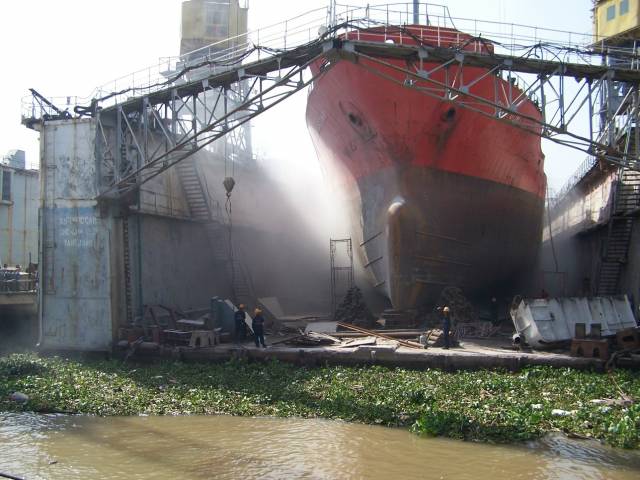
Saigon Shipmarine has quite a reputation for renovating vessels. Ship owners from the whole region send their vessels there for maintenance and repair. The shipyard is located at the Saigon River in down town Ho Chi Minh City. The shipyard is likely to be relocated in the near future to make room for the building boom in HCMC.
Prices are skyrocketing, office rents for international standard are now more expensive than Shanghai.
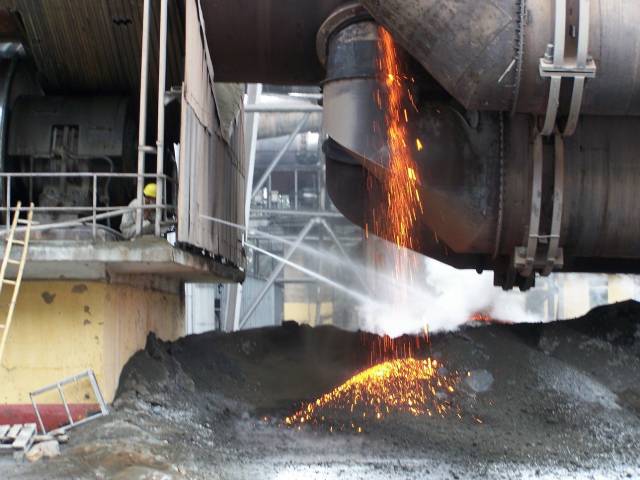
Hoang Thach cement factory is famous in Viet Nam for delivering the best cement in the country. The highly profitable corporation is also a source of pride for Danish development assistance. Hoang Thach was one of the first Danish aid projects in Viet Nam with state of the art technology from FLS Industries. After more than 25 years in operation, the old lady still runs at full steam, albeit with some maintenance issues, as is evident from the photo.
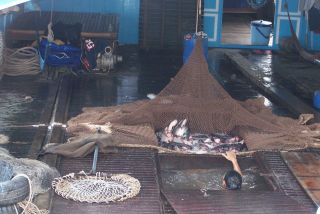 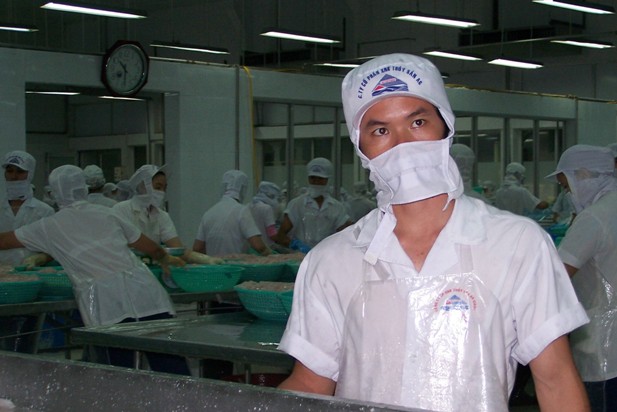
In the deep South you may visit another commercial success story, which has its origins in Danish-Vietnamese development cooperation: The An Giang Corporation, which exports huge amounts of fish to the big markets in Asia and the US.
The catfish are landed manually right on the steps of the factory. At the other end they come out of the high-tech facility in vacuum packed filets, complete with barcode pricing in Japanese Yen or USD. Denmark has assisted numerous Vietnamese fishing companies to develop international quality standards.
Today the fisheries industries export for more than USD 8 billion a year, making it one of the biggest earners in Viet Nam. Thousands of new jobs have been created in the process.
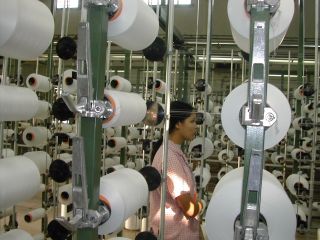 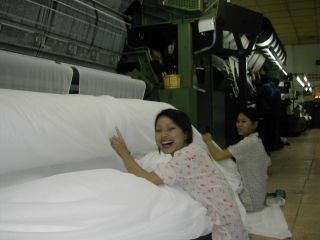
.... And here is yet another Danish-Vietnamese success story: The '10-10' mosquito-net factory in Ha Noi, named after the date (10 October 1954), when the French colonial administration left the capital of the newly independent 'Democratic Republic of Viet Nam. 10-10 and the Danish partner Vestergaard Frandsen has developed a major business in world-wide exports of mosquito-nets.
No wonder if the girl (left photo) looks a bit lost among the spinning rolls. More than 6 million nets a month are produced at '10'-10'. The operation in Viet Nam is managed by Sonny Jensen, fellow Dane and a close friend of mine for more than a decade.
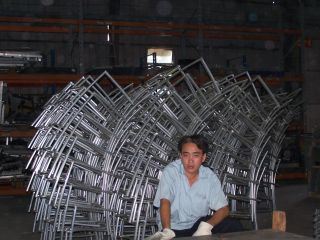 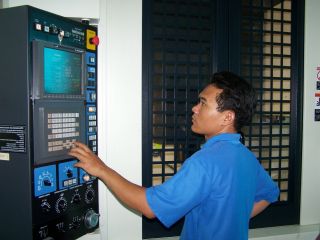
Sorry, again it is a successful Danish-Vietnamese cooperation. Furniture producer Scancom (left) exports for more that USD 130 million a year now, creating jobs for some 25.000 Vietnamese workers. Viedam (right) is a lot smaller, but also a very successful joint-venture in the booming plastics-industry of Viet Nam. Both projects are located in the Ho Chi Minh City area and supported by Danida's Business2Business-programme.
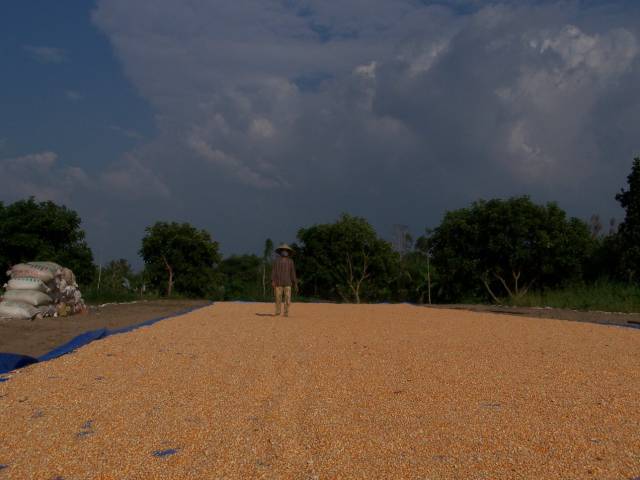
But then again.... much of Viet Nam remains under-developed with traditional manual labor as the most important tool. Like here in Cuu Long (Mekong Delta), where the drying of maize is carried out, literally turning it over by foot - I met this old lady Nguyen Thi Mai just before noon one day. She had been walking back and forth in the maize since early morning. And where did all that maize go? - To the always hungry pigs at a Danida funded pig farm just outside the boundaries of this photo.
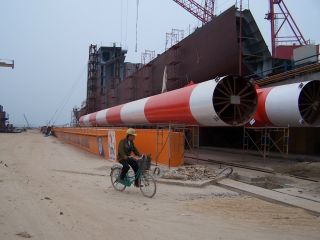 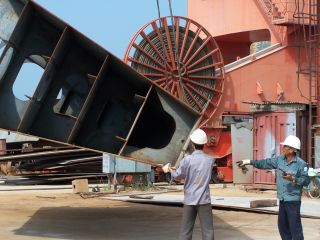
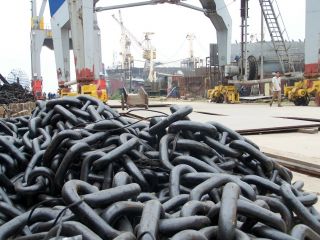 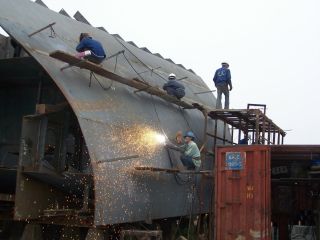
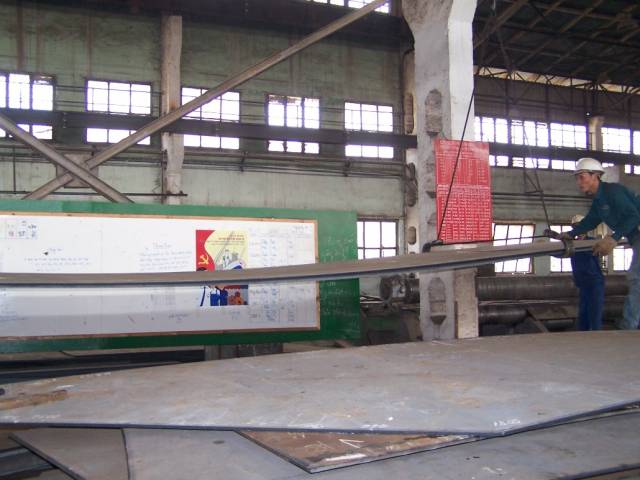
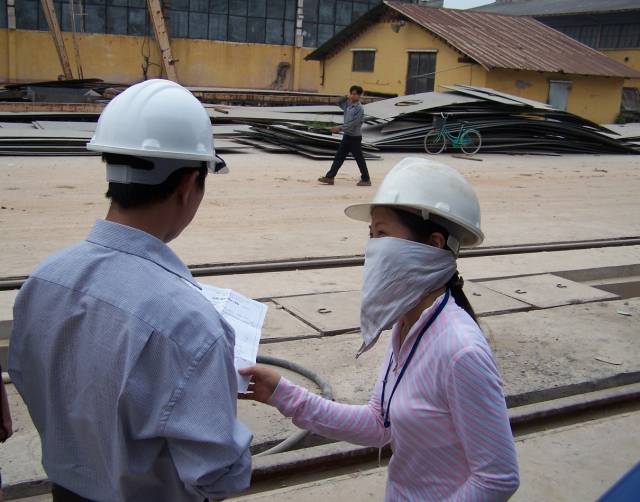
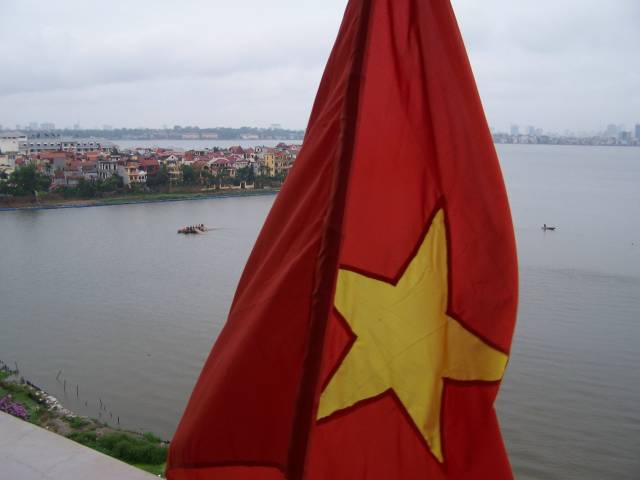
VIET NAM AT WORK
|
 |
|
THE LABOUR MARKET
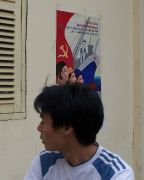
Minimum wage in 2012 is approx. USD 68 per month.
Average wage is USD 100-150 in the formal industry.
Work week is 6 days/48 hours
Workforce: 50 mio. people
|
|
![]() INDICATORS/2011: Economic growth: 6 % Foreign inv.: USD billion 40. Inflation: 12% INDICATORS/2011: Economic growth: 6 % Foreign inv.: USD billion 40. Inflation: 12%
| |